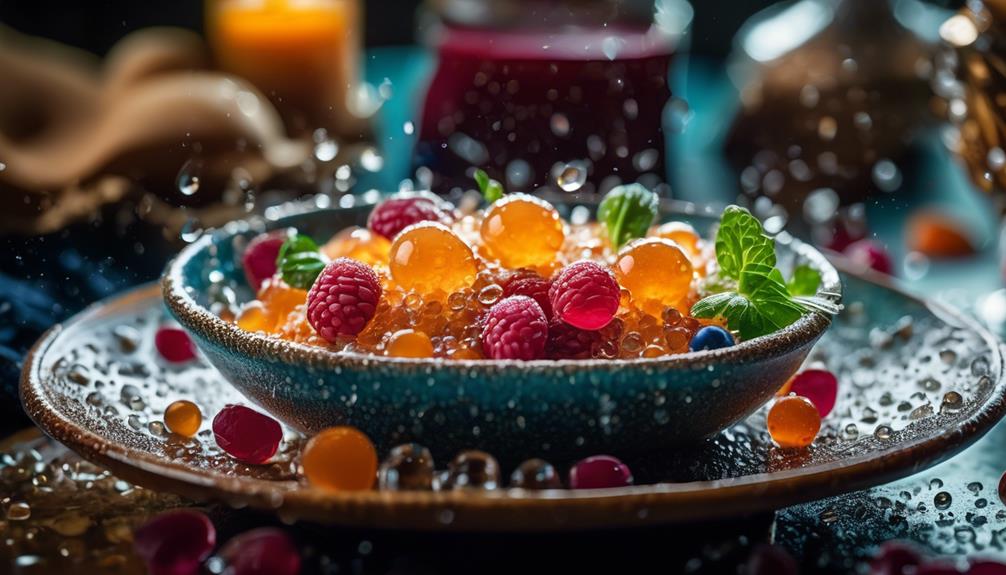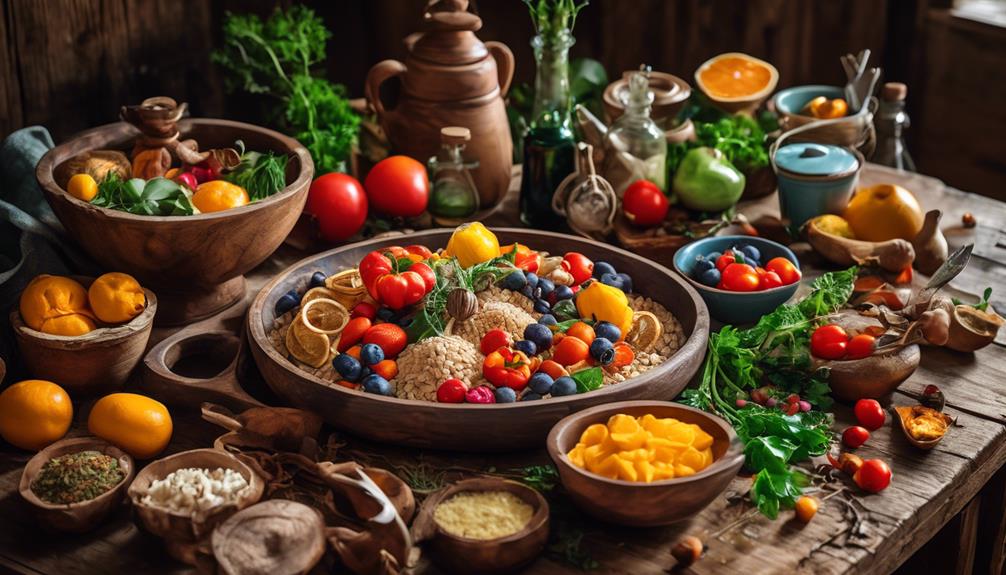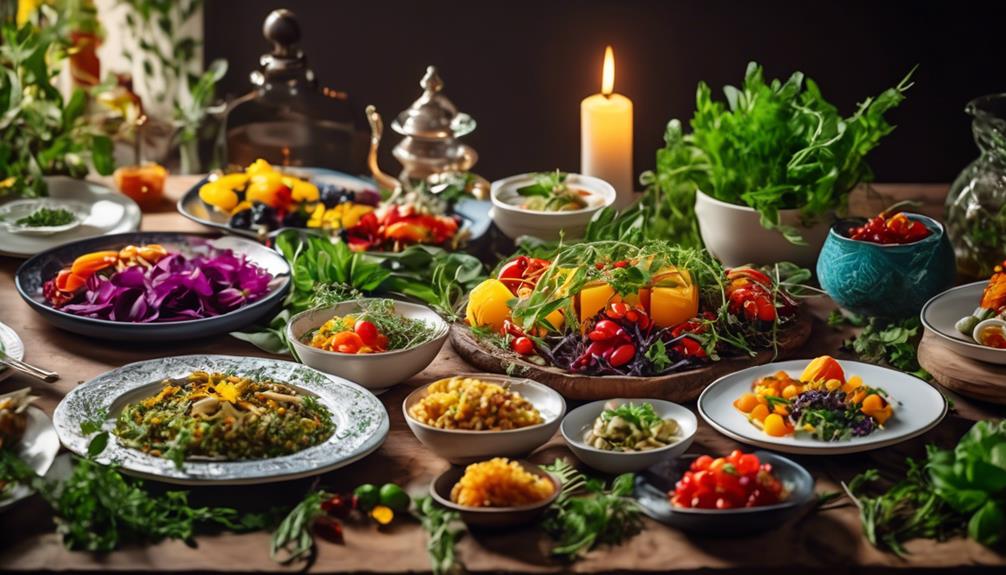Please note this post may contain affiliate links picked by me (Jay) that I have deemed may be of interest or relevant to you the reader of this.
These links do not affect the cost of the thing if you decide to purchase but i may get a little money if you choose to purchase.
For more information on my affiliate link policy click here.
In a world saturated with food photography, where every dish is meticulously captured and shared, how does one stand out from the crowd?
What reveals the secret to creating truly phenomenal food photography? Is it the expensive camera equipment or the latest editing software? Or perhaps, it's something more elusive, hidden within the careful interplay of light and composition, the artful arrangement of props and styling, and the daring exploration of angles and perspectives.
Join me on a journey as we uncover the techniques and tricks that elevate food photography to a level that leaves viewers craving for more.
Key Takeaways
- Lighting techniques, whether natural or artificial, play a crucial role in bringing out the best in food photography.
- Composition tips, such as considering color schemes and utilizing balance and symmetry, can greatly enhance the visual appeal of food shots.
- Props and styling ideas can be used to enhance the overall presentation and theme of food photography, utilizing textures, colors, and psychological impact.
- Experimenting with creative angles, perspectives, and post-processing techniques can elevate food images to a whole new level of stunning visual impact.
Lighting Techniques for Food Photography
When it comes to capturing mouthwatering images of food, mastering the art of lighting is essential. Lighting can make or break a food photograph, and understanding the difference between natural and artificial lighting is crucial for achieving stunning results.
Natural lighting, such as sunlight, can bring out the natural colors and textures of food, creating a vibrant and appetizing image. On the other hand, artificial lighting allows for more control over the intensity and direction of light, making it easier to highlight specific elements of the dish.
Creating mood with lighting is another important aspect of food photography. By using soft, diffused lighting, you can create a warm and inviting atmosphere, perfect for capturing comfort food or desserts. On the other hand, using harsh, directional lighting can create dramatic shadows and highlights, adding a sense of sophistication and elegance to your images.
Experimenting with different lighting techniques can help you convey the desired mood and evoke specific emotions in your audience.
Composition Tips for Captivating Food Shots
To create captivating food shots, it's crucial to master the art of composition. The way you arrange the elements in your frame can make or break your photograph. One important aspect to consider is the color scheme. Choosing a harmonious color palette can enhance the visual appeal of your food. Think about complementary colors that will make the dish pop, or monochromatic tones for a more elegant and minimalist look.
Another key factor in composition is plating and presentation techniques. Pay attention to the arrangement of the food on the plate. Consider the balance and symmetry of your composition. Try different angles and perspectives to add depth and dimension to your shot. Don't forget about negative space, as it can provide breathing room and highlight the main dish.
Experiment with different props and backgrounds to enhance your composition. Textures, patterns, and contrasting elements can add visual interest to your photograph. Remember, composition isn't just about what's in the frame, but also what's outside of it.
Props and Styling Ideas to Enhance Food Photography
As a food photographer, I've discovered that the right props and styling can elevate your food photography to the next level, capturing the attention of viewers and making your dishes truly shine. The way you present your food is just as important as the food itself.
Here are some prop and styling ideas that will enhance your food photography:
- Choose props that complement the food presentation: Select props that enhance the overall theme and mood of your dish. For example, rustic wooden boards can add a cozy and natural feel to your photographs, while elegant ceramic plates can create a more sophisticated and refined look.
- Experiment with different textures and colors: Incorporate various textures and colors in your props and backgrounds to create visual interest. For instance, using a textured fabric as a tablecloth or adding a pop of vibrant color with fresh herbs can make your food stand out.
- Utilize color psychology: Colors can evoke different emotions and stimulate appetite. Consider using props with colors that complement the food you're photographing. For example, warm tones like red, orange, and yellow can create a sense of warmth and excitement, while cool tones like blue and green can convey a calm and refreshing vibe.
Creative Angles and Perspectives for Food and Product Photography
With the right props and styling in place, it's time to explore the world of creative angles and perspectives that can truly bring your food and product photography to life. When it comes to capturing mouthwatering dishes, innovative plating techniques can make all the difference.
Experiment with layering ingredients, creating height, and arranging elements in a visually appealing way. Think outside the box and try unconventional shapes or asymmetrical compositions for a unique and eye-catching result.
Incorporating reflections in your food and product photography can add an extra touch of sophistication. Utilize shiny surfaces, such as mirrors or glass, to create stunning reflections that enhance the overall composition. Capturing the reflection of a dish or product can create a sense of depth and dimension, making it more visually striking.
Play with different angles and perspectives to find the perfect reflection that complements your subject. Remember to pay attention to lighting and adjust it accordingly to avoid unwanted glare or shadows.
Editing and Post-Processing Tricks for Stunning Food Images
When it comes to creating stunning food images, the secret lies in mastering the art of editing and post-processing. With the right color grading techniques and retouching methods, you can take your food photography to a whole new level.
Here are some editing tricks that will help you achieve phenomenal results:
- Adjusting the white balance: By correcting the white balance, you can ensure that the colors in your image appear natural and true to life. This can be done using software like Adobe Lightroom or Photoshop.
- Enhancing the colors: Color grading techniques allow you to enhance the colors in your food images, making them more vibrant and visually appealing. You can experiment with different color tones to create a unique and captivating look.
- Retouching imperfections: Sometimes, certain imperfections like blemishes or crumbs can distract from the overall beauty of the food. With retouching methods, you can remove these distractions and create a clean and polished final image.
Frequently Asked Questions
What Type of Camera Equipment Should I Use for Food Photography?
When it comes to capturing stunning food photographs, the type of camera equipment you use is crucial.
It's important to choose a camera that allows you to adjust camera settings, such as aperture, shutter speed, and ISO, to achieve the desired effect.
Additionally, investing in good lighting equipment and learning various lighting techniques can make a world of difference in your food photography.
How Do I Capture the Perfect Steam or Smoke Effect in Food Photography?
To capture that perfect steam or smoke effect in food photography, it's all about creating an atmosphere. I've discovered that a combination of lighting, props, and timing can make all the difference.
What Are Some Common Mistakes to Avoid When Styling Food for Photography?
When it comes to food photography, there are some common mistakes in food styling that we should avoid.
One tip for enhancing the visual appeal of food in photographs is to be mindful of the presentation. Avoid cluttered backgrounds or messy compositions that distract from the main subject.
Another mistake to avoid is using artificial lighting that washes out the colors and textures of the food. Instead, opt for natural lighting that brings out the vibrancy and freshness.
Are There Any Specific Color Schemes or Palettes That Work Best for Food Photography?
In food photography, color schemes and palettes play a crucial role in capturing stunning images. By understanding color psychology in food photography, I can create visually appealing compositions that evoke specific emotions and enhance the overall aesthetic.
Additionally, using props effectively can elevate the visual appeal of the dish, adding depth and interest to the photograph. By experimenting with different color schemes and incorporating props strategically, I can reveal the secret to phenomenal food photography.
Can You Provide Tips on How to Make Food Look More Appetizing and Appealing in Photographs?
When it comes to making food look irresistible in photographs, food styling techniques, lighting, and composition are key.
By carefully arranging the elements on the plate, using props strategically, and playing with textures and colors, you can create a visual feast that captures attention.
Lighting is crucial to highlight the details and create depth, while composition helps to guide the viewer's eye.
Combining these elements will give your food photography that wow factor that makes mouths water.
Conclusion
In conclusion, mastering the art of food photography requires a combination of technical skills and creative flair. By utilizing effective lighting techniques, composing your shots thoughtfully, and choosing the right props and styling ideas, you can capture stunning images. Experimenting with different angles and perspectives and applying editing tricks will also enhance your photos.
So grab your camera and get ready to unlock the secrets to phenomenal food photography!


